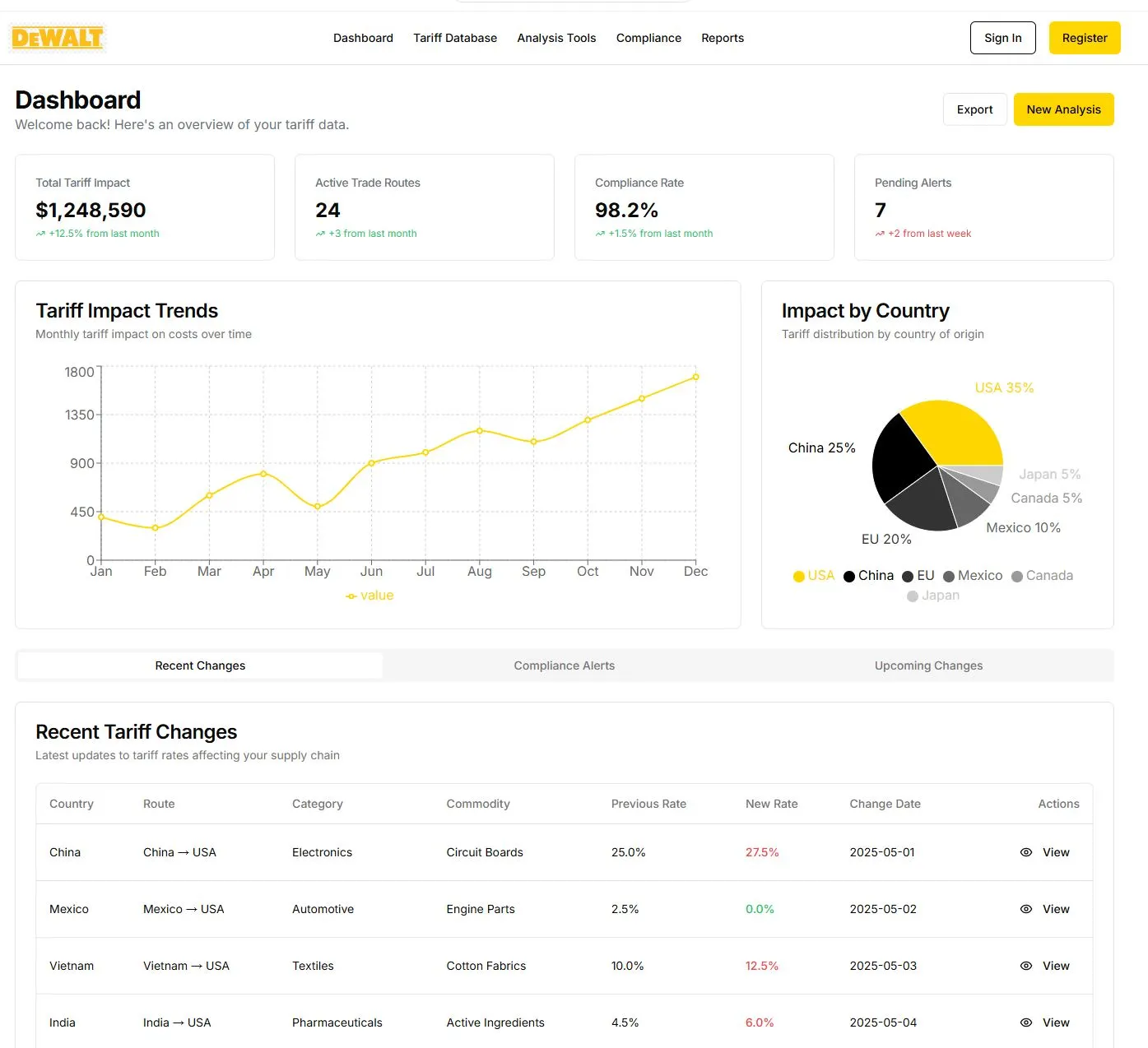Stanley Black & Decker - Beyond Build vs. Buy with AI-Prototype Build
By Chris Rickard · September 19th, 2025
Stanley Black & Decker (SBD), a global manufacturer of industrial tools and household hardware, manages a substantial annual investment in its digital and analytics portfolio. An internal study conducted by Gartner found that approximately 1/3rd of project effort is dedicated to requirements gathering and design, representing a significant portion of SBD's overall costs.
Traditional build vs. buy decisions often forced teams to choose between months of custom software development or rigid off-the-shelf software. SBD’s CTO Matt Griffiths saw an opportunity to rethink this binary choice by using AI as a force multiplier.
Moving beyond build vs. buy, with AI-Prototype Build
Buying is fast but rarely tailored, while building offers control at the cost of time and resources. AI-Prototype Build offers a third option. Instead of committing upfront, teams use AI-driven tools to prototype real applications quickly, validate them with stakeholders, and then decide whether to invest in full development or adopt a commercial product. This approach compresses discovery, scoping, and design, giving organisations room to explore without heavy spend.
"We thought that Userdoc may help us go from six weeks of requirements writing to three weeks, but instead we've gone from six weeks to just three hours."
— Matt Griffiths, CTO, Stanley Black & Decker
Stanley Black & Decker’s AI-Prototype Build workflow
- Capture the conversation. During a Teams session or workshop, SBD records the discussion and loads the transcript into Userdoc. Userdoc’s AI extracts user types, user stories, functional and non-functional requirements, and user journeys. Matt reports that
a high-level scoping document can be produced in about 20 minutes, and with another few hours of refinement, the team has a near-complete requirements set.
- Generate a working prototype. SBD then integrates the Userdoc requirements into their AI dev platform of choice - V0.dev. In just a few prompts, V0 generates a working web app - roughly
roughly 30% functional code, good enough for demos and feedback.
- Iterate fast. Stakeholders are then clicking through a prototype within minutes, not months. SBD actually built the initial prototype of their tariff management app during a meeting. They then iterated dozens of times over a few days, refining the prototype easily using AI.
Post-prototype
AI development platforms like V0 and Lovable have limits, and often after a certain number of features the AI might start to struggle or get confused. This is where moving to AI dev tools like Cursor, Claude Code, or GitHub Copilot comes in. To do this you can simply download the code, and engineers can finish it off, harden the application, add security, integrate with internal systems etc. Userdoc's MCP server allows any AI-assisted coding tool to directly integrate with the latest requirements, so you can continue to use Userdoc as your source of truth.
The application is at a point where I can hand it to a development team and say "take it from 50% functional to 100% functional". That would be massive, massive performance improvement in terms of the lifecycle of building an application.
— Matt Griffiths
Visualising the process
Tariff Modeler application requirements: created in ~20 minutes, then refined and confirmed with SBD over a few hours using Userdoc’s AI.

Finished Tariff Modeler prototype generated in V0 from those requirements, in just a few days.

AI-Prototype Build - Before vs. after for Stanley Black & Decker
| ❌ Before | ✅ After |
|---|---|
| Requirements & design was represented 1/3rd of the project cost - 6 weeks+ of work for a small project | Requirements take ~20 minutes to generate, then refined in Userdoc in under 3 hours. A 98% time reduction. |
| Time to first demo & stakeholder alignment might take months | Demo can now be built in the same day or within 48 hours |
| Software development took months | 50% functional prototype in days, 100% functional in a week or two |
| Cost of change very high; late rework is expensive | Low; iterate on prototype quickly. |
| Documentation was upfront, and often end up out of date | Documentation is living and updated with the prototype. Spec-Driven Development |
Embrace the shift now
AI capabilities are compounding weekly. Leaders who lean in now build durable advantage. This isn’t just about tools - it’s a new operating model where business teams co-create requirements and prototypes in hours, and engineers take them to production in days.
Start a tight pilot, measure weekly, and scale what works - speed over perfection.
"Subscribe to the theory that this is the worst AI will ever be."
— Matt Griffiths
🚀 Book a demo to see AI-Prototype Build in action ✨
We'll walk through mapping an internal tool, generating structured requirements in minutes, and showing how you can quickly reach a working prototype.
Frequently Asked Questions
| Question | Answer |
|---|---|
| What is AI-Prototype Build? | AI-Prototype Build is a hybrid approach that uses AI to rapidly prototype and validate ideas before investing in full production code. At SBD this means capturing conversations in Userdoc, generating structured requirements, spinning up a working prototype with V0.dev, and then handing the code to engineers to finish in Cursor or Claude Code. |
| Why not just buy? | Off-the-shelf tools seldom fit unique workflows. Sometimes you're paying for many features you don't need, or paying for software that is missing features you do need. |
| Can we rebuild existing SaaS we pay for? | Yes. Identify high-cost, low-adoption SaaS, capture real workflows and data entities in Userdoc, prototype the 20–40% of functionality that delivers most value, validate, then migrate gradually and retire the license. |
| How much could we save? | Every portfolio is different, but if you can build the requirements in a few hours, and the prototype in a few days, then you could see initial prototype savings of around 90%. From there you can build the rest of the application in a few weeks, (instead of months), which could potentially save around 60% of the total cost of the application. |
| Is the code production ready? | Not yet. AI prototypes typically deliver between 30% - 50% of the functionality. But by using AI-assisted coding tools like Cursor or Claude Code, you can finish the rest of the application in a few weeks. |
| How does my organisation get started? | The first step is to start experimenting. Use tools like Userdoc, V0, Lovable, etc. Identify a small, non-critical project, and run a pilot. Get comfortable with the tools, measure weekly, and scale what works. |
| Which projects suit AI-Prototype Build best? | Best early candidates: internal workflow / CRUD apps, dashboards, approvals, replacing spreadsheet processes. Avoid safety‑critical, deep real‑time or heavy proprietary algorithm systems first. Start small to prove cycle time. |
| What if we need to rebuild an existing codebase? | Use Userdoc's code-to-documentation to ingest the codebase and generate structured, detailed documentation, a clean spec that de-risks a rewrite or refactor before you prototype. |

